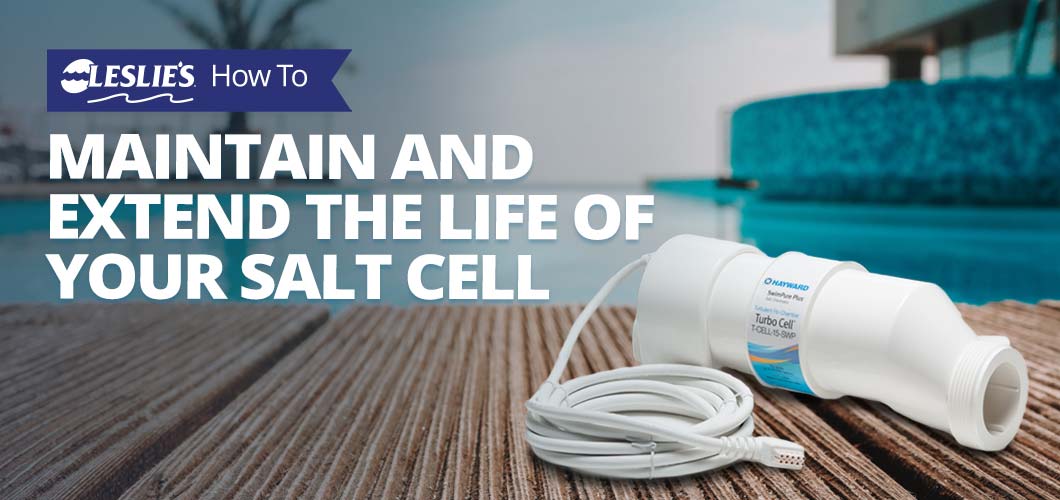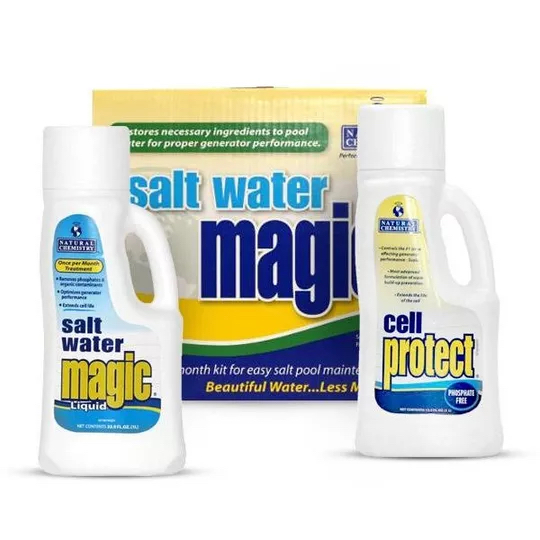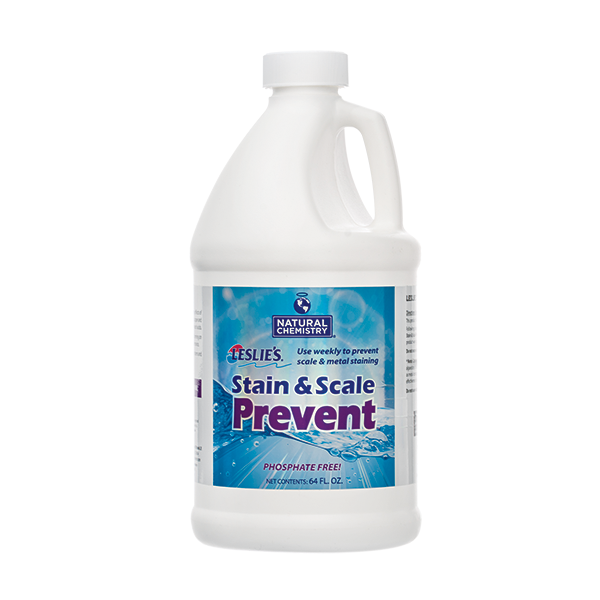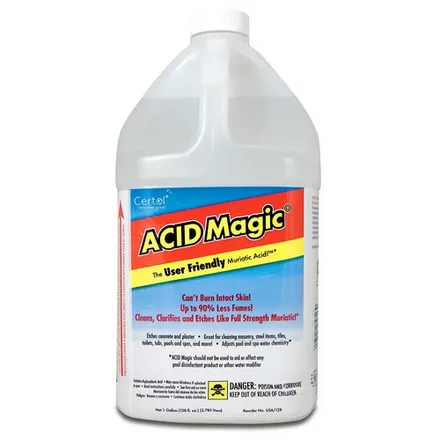
How to Maintain and Extend the Life of Your Salt Cell
Saltwater pools are a luxurious alternative to typical chlorine pools and offer many benefits, like silkier water and reduced chemical use. But as many pool owners know, installing a saltwater chlorine generator and salt cell can be a pricey endeavor. So, to help you get the most out of your equipment, we've put together the top five ways to maintain and extend the life of your salt cell.
1. Maintain Proper Water Chemistry Balance
A high-quality salt cell can last 3–7 years on average, depending on use and maintenance. One of the most guaranteed ways to maintain and extend the life of your salt cell is to keep your pool water chemistry in check. When testing your pool water, pay close attention to the pH, Calcium Hardness, and Total Alkalinity (TA) levels. Elevated pH, Calcium, and TA create scale buildup on the metal plates in the salt cell, and reduce chlorine production. So, keep your pool's pH, TA, and Calcium Hardness at the lower end of their ideal ranges to avoid excessive scale buildup in your salt cell.
2. Check Salt System Weekly
Once a week, take a look at your salt system control board and ensure the system is working well. Inspect the wires and control box, and verify there are no error codes illuminated on the screen. For more salt system information and troubleshooting tips, check out our resource center!
3. Use a Salt System Additive
There are many additives available to help keep your salt cell protected and lengthen the life of your cell, like Natural Chemistry's two-part Salt Water Magic system. Salt Water Magic Liquid optimizes salt cell and chlorine generator performance by removing phosphates and organic contaminants from your pool water. Cell Protect contains sequestering agents and calcium inhibitors that prevent metal oxidization and scaling in the salt cell, and around your pool surface.
4. Inspect Salt Cell Monthly
Once a month, check your salt cell for signs of scale buildup and any other problems. Resolving scale buildup or cell damage early can extend the life of the cell and prevent costly repairs. To examine the cell, turn off your pool pump and disconnect the cell from the unions. Inspect the inside of the cell for any calcium scale buildup, which will look white and flaky. If you see blue or green buildup, there's another problem at hand.
Blue or green material buildup is rare, but not unheard of. This sort of accumulation indicates a high amount of metals in your pool water. Test your pool water chemistry and use a sequestering or chelating agent, like Leslie's Stain & Scale Prevent, to bring the metal content down. Green or blue buildup can also indicate your cell has gone bad or lost its protective blade coating, and needs to be replaced.
5. Clean Salt Cell When Necessary
If you find scale buildup in your salt cell, it's time to clean it. Keeping the cell clear of scale is one of the best ways to maintain your salt cell.
Grab the following protective gear and cleaning supplies first:
- Goggles
- Gloves
- Closed-toed shoes
- Salt cell cleaning stand or a plastic bucket
- Muriatic Acid or Acid Magic
How to Clean a Salt Cell
Once you assemble the required supplies, follow the directions below to begin cleaning your salt cell:
- Shut off power to your pool and remove the salt cell from the pool lines.
- Hose off the inside of the cell to remove any debris particles.
- Put on your goggles, gloves, and close-toed shoes, then prepare the acid solution. Carefully dilute muriatic acid or Acid Magic with water in a bucket, referring to manufacturer recommendations for the exact ratio. Remember to always add chemicals to the water — not the other way around. Once the solution is ready, you can start soaking the cell. Keep in mind that some salt cell manufacturers do not recommend using acid to clean the cell, so always refer to the owner's manual for instructions to prevent voiding the warranty.
- If you have a cell cleaning stand, connect one end of the salt cell to the stand. Then slowly pour the acid mixture into the cell until the plates are completely submerged.
- If you don't have a cell cleaning stand, attach a cap to one end of the cell. Place the cell in a dry, plastic bucket, then pour the acid solution into the cell.
- Let the solution soak in the cell for 2–5 minutes. If the cell has excessive buildup, you may need to soak it for 10–15 minutes, or until the bubbles stop.
- When the cell is done soaking, carefully remove it from the stand or bucket, dispose of the acid solution, and rinse the cell with fresh water.
EXPERT TIP: Remember, too much of a good thing isn't always good! Cleaning your salt cell with acid too often will strip the coating off the metal plates and render the cell useless. Inspect your salt cell monthly, but only clean it when it starts to develop scale.
Maintaining and extending the life of your salt cell is easier than you think. Keeping your pool water chemistry balanced and regularly inspecting the cell are guaranteed ways to ensure your cell stays in top shape. For more information about saltwater pools and salt systems, check out our resource center, or stop by your local Leslie's to speak with one of our pool care experts.


